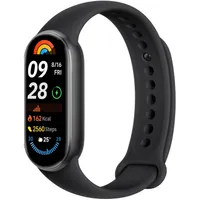Forget the gym—boost your cardio fitness with this 15-minute, low-impact walking workout
Get a quick cardio boost with this trainer's 15-minute walking workout


If you struggle to fit movement into your day, a walking workout could help you do more than just increase your step count.
"Walking workouts have many incredible benefits," says AloMoves trainer Bianca Wise. "They can improve your cardio and boost your lymphatic health [an important part of your immune system]."
"Walking is also low impact, making it the perfect workout to complement other forms of movement, while also helping to improve muscle strength,” says Wise. Walking can also help with weight management and give your mental wellbeing a lift.
To help you hit your daily step target, Wise has created a simple and fuss-free walking workout, exclusively for Fit&Well. This routine can be done anywhere and though it will take just 15 minutes, it will elevate your heart rate and strengthen muscles used in walking, helping you get stronger for your next stroll.

Fitness expert Bianca Wise is an accredited fitness instructor with a Certificate IV in Pilates. Wise’s favorite thing about a walking workout is that it can be easily fitted into your daily routine and done almost anywhere—either on a treadmill at home, outside or in a gym.
How to do the 15-minute walking workout
This walking workout is split into three five-minute intervals, each with a different intensity level, from light to moderate.
To guide your effort, Wise uses heart rate zones (HR zones), which measure what percentage of your maximum heart rate (HRmax) you’re working at.
To find your heart rate max, subtract your age from 220. Once you've worked this out, you can calculate your different heart rate zones, using the percentages detailed below.
Start your week with achievable workout ideas, health tips and wellbeing advice in your inbox.
If this doesn't work for you, try navigating the workout using your perceived rate of exertion instead, which is a rough measure of how hard you're working. It's usually calculated from 1-10, with 10 being your maximum effort.
What do the five HR Zones mean?
- Zone 1 = very light intensity, 50%-60% of your HRmax
- Zone 2 = light intensity, 60-70% of your HRmax
- Zone 3 = moderate intensity, 70-80% of your HRmax
- Zone 4 = high intensity, 80-90% of your HRmax
- Zone 5 = maximum intensity, 90-100% of your HRmax
You can measure your heart rate using a simple fitness tracker. If you don't have one, we've rounded up the best Black Friday Fitbit deals for you— or take a look at the cheap deal below.
This little tracker is ideal for anyone who simply wants to monitor their heart rate, steps and calorie burn. As it avoids fancy features like music control or in-built GPS, it's a very reasonable price.
How to do the three walking intervals
- Warm up, 5 minutes: Start with a low intensity walk to prepare your body for movement. Aim for Zone 2, maintaining a light effort at around 60-70% of your HRmax.
- Power walk, 5 minutes: Increase your pace to reach Zone 3. This should be a moderate to vigorous effort, increasing your heart rate to 70-80% of your HRmax and challenging your cardiovascular system.
- Cool down, 5 minutes: Ease off to a lighter intensity for your final five minutes, returning to Zone 2. You should be able to hold a conversation comfortably.
If you want to make this 15-minute walking workout harder, Wise suggests adding a hill or set of stairs to climb. “The important thing to remember is that breathing in and out of your nose and maintaining a controlled heart rate will help improve your fitness levels,” the expert adds.
Want more low-impact routines like this one? Check out this 10-minute walking workout or learn what happened when I tried this 5,000-step walking workout with over one million views.
Becks is a freelance journalist and writer with more than 7 years of experience in the field. She writes health and lifestyle content for a range of titles including Live Science, Top Ten Reviews, Tom’s Guide, Stylist, The Independent, and more. She also ghostwrites for a number of Physiotherapists and Osteopaths.
Health has been a big part of Becks’ lifestyle since time began. When she’s not writing about the topic of health, she’s in the gym learning new compound exercises. And when she’s not in the gym, she’s most probably reading.

